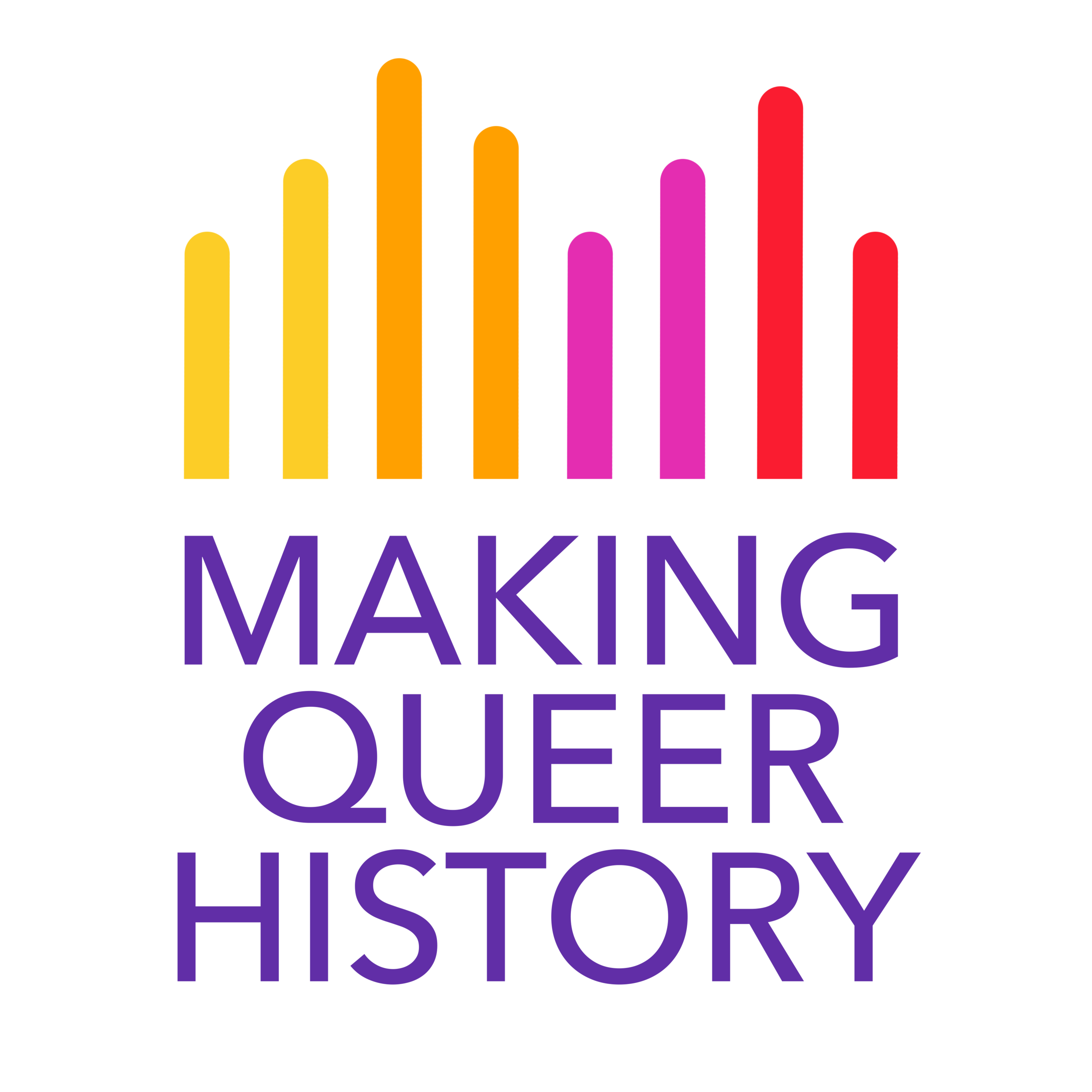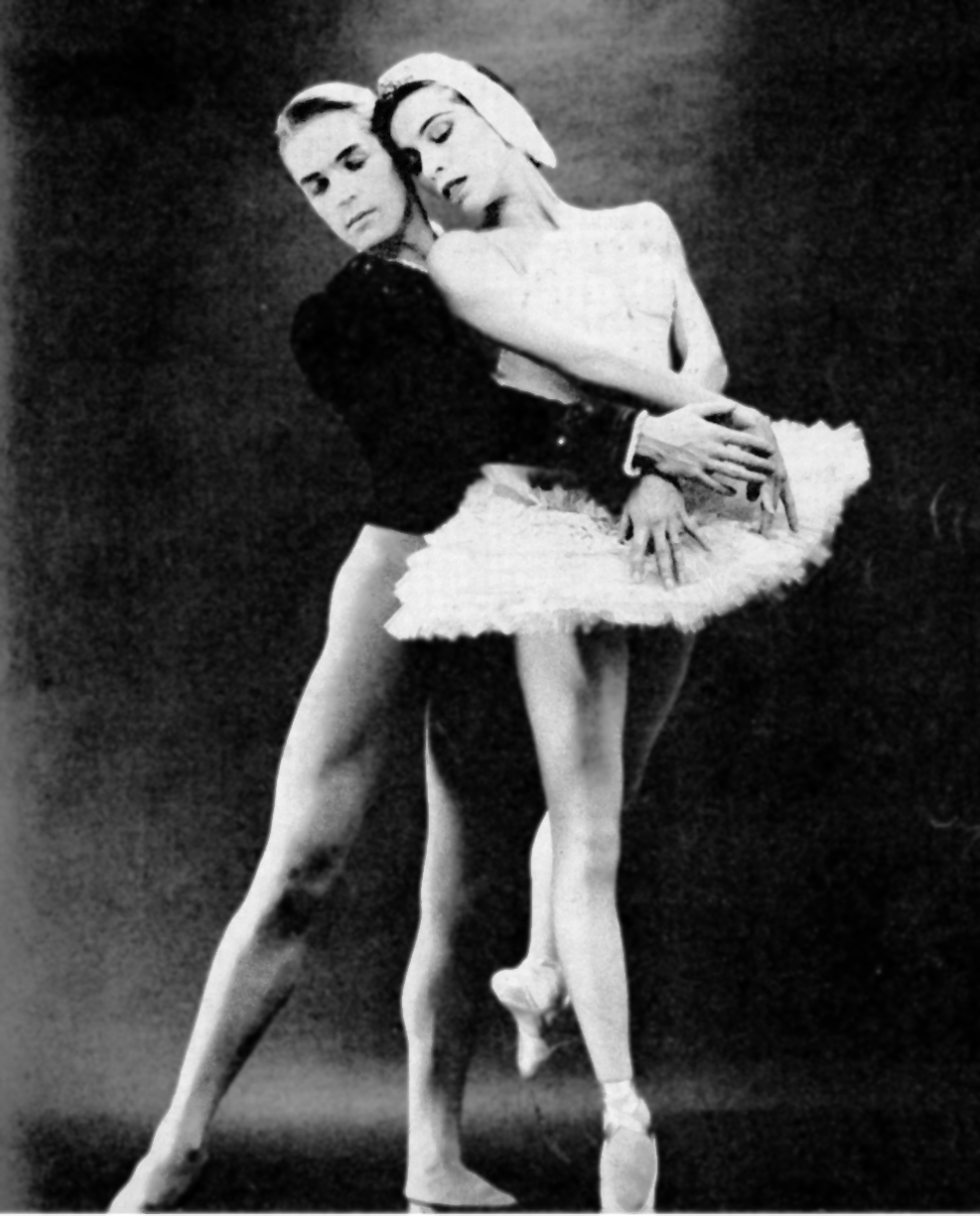Erik Bruhn, a thin white man wearing a black leotard, dancing with Maria Tallchief. a thin Indigenous woman wearing a white tutu.
“Being the greatest I can tell you, the greatest dancer has not been born yet.”
– Erik Bruhn
The connections between generations have become a difficult subject for the community. With the idea that queer people are inherently predatory still circulating, and an entire generation of queer people lost to the AIDs epidemic, the connection of mentor and mentee is a rare one within our community. Though Erik Bruhn, unfortunately, didn't have an older queer person to look up to, he became a mentor in every way possible.
Born in Copenhagen, Denmark on October 3, 1928, Erik Bruhn was originally put into dance class because he seemed disconnected with people his age. He took to ballet like a fish to water. He became deeply focused on the precision and technique of the sport, dancing at Copenhagen’s Royal Opera house when he was only eighteen.
Though his dancing and hard work were highly praised by teachers and critics alike, Bruhn never fully shook the loneliness that had held onto him from childhood. He felt deeply the pressure of such a rewarding—and expensive—career. His family didn't have an easy time financially, and he focused all of his energy on dancing. He knew from a young age that he was good at ballet, and strove to be the best.
Once he felt he had mastered the technical side of the art, he focused in on the emotional one, working for passion in his performances as well as perfection. He was invited into the Royal Danish Ballet when he was eighteen and promoted to soloist only two years later.
Through all of this, he focused on the inherent connection of ballet. He partnered with many different women, formed many deep connections that would last throughout his life. Even when a friendship was not struck, as he still felt disconnected to most people, he gave care to the demands and emotional vulnerability that was required of any partnership. He gave rare compromises in his work and listened to the needs and suggestions of his partners.
This work would lead him to have visibly intense connections with the women he worked with, something that critics would note time and again.
He wrote of the dynamic:
“It has been noticed that I have been able to work with many different kinds of ballerinas, and on most occasions, we succeeded in becoming a team if only for a season or two. And that is because I always wanted to relate to them. I don't remain the same. Each ballerina is different; she has a special flavor or she wouldn't be a ballerina. This would color my style and shape my approach. I remain true to myself, but I let her flavor color me as mine colors her ... A good partnership can somehow crystallize something that you have been doing already. When the right people come together, they bring the right thing out of each other ... With the right person, it becomes a situation of being rather than playing ...The role absorbs you and you become it. And then it seems like you can do nothing wrong because you are so totally absorbed by this being.”
Critics truly fell in love with him after his performance in Giselle in 1955, with an article titled “The Matinée that Made History." It was written:
“[Erik Bruhn] is probably the most completely equipped male dancer of the day, with the flawlessly clean technique that comes only through a combination of enormous talent allied to correct day-by-day training from childhood … If his dancing was magnificent, and it was, his partnering of and playing to Markova were no less so. The result was one of those electrifying performances when everyone both in the audience and on the stage is aware that something extraordinary is happening.”
Through his work, he left Denmark, toured throughout Europe and North America, and gained more and more of a following as he went. Known as a “dancer’s dancer”, he was working to change the place of men in the world of ballet. He wanted to give space for them to have more emotionally rich roles in future performances as he worked with various production teams.
With this fame, he caught the eye of another famous male dancer: Rudolf Nureyev. When Nureyev was twenty-three, and Bruhn thirty-two, the younger man approached Bruhn. He was convinced that Bruhn was the only man who had anything to teach him.
The two had respect and admiration for each other’s work, each finding in the other expertise in a field they were still exploring. Nureyev originally south Bruhn out for his famed precision, and Bruhn became impressed by Nureyev’s passion and intensity.
While training together, the men built a relationship; while it was sexual for a time, it was primarily romantic. Fairly quickly the two would end their sexual relationship, and for the rest of their lives they would refer to one another as "the love of my life." Through his relationships with different men and women, the two remained extremely close and promoted each other's work constantly.
Though the beginning of their relationship helped bring Bruhn out of a slump, 1963 brought another obstacle. This came in the form of chronic pain.
Within the competitive world of ballet, injuries and pain in the body are often ignored, as sitting out even one performance can be catastrophic to a dancer's career, even one as loved as Erik Bruhn. Because of this, injuries and pain that may have initially been treatable will often fester and become much worse than they initially had to have been.
What Erik Bruhn had was rare for someone as immersed in the world of ballet as he: the financial and emotional ability to leave his dance career. Though he loved the art, again and again in interviews he would mention his interest in other things, and his knowledge that he would not be able to dance forever.
At times he appeared to have almost accepted that he would have to let go of ballet, even when that possibility seemed nowhere in sight.
When he was in pain, he didn't hesitate to go to the doctor. Unfortunately, when the doctor found no obvious cause for the pain they dismissed it as psychosomatic symptoms caused by stress. The idea of psychosomatic pain is an easy scapegoat for doctors who cannot find the source of a problem and has often been used as a way to move on from a difficult case, rather than an actual diagnosis. This seemed to have been the case with Erik Bruhn, as although he formally retired from dancing in an attempt to lessen the stress on his body and mind, his pain got increasingly worse, until one day he was rushed to the hospital.
It was finally discovered that he had a perforated ulcer. After surgery the pain was gone, allowing him to continue dancing.
With his return to the world of ballet, he moved from what had initially made critics and audiences fall in love with him, moving from starring roles to character-based ones that would allow him to embrace his interest in acting. While he continued to garner praise for these roles, he also continued to look for new challenges. The next portion of his career, though often dismissed as a form of retirement, would offer that challenge.
The National Ballet of Canada was a fairly new company upon Erik Bruhns’s appointment as artistic director. Still finding it’s footing globally, the company’s past two artistic directors only held their jobs for a short time and were not very popular.
Erik Bruhn’s appointment was a huge leap in stature for the company and brought new energy to the flagging group. Upon his hire, Bruhn noted that the dancer’s seemed to be discouraged. Though they were incredibly talented they lacked passion, a struggle he understood well.
Before he began, he was very firm that he would not end up behind a desk. He would train and dance with the students at least once a day, committing to an involved approach to his role. He discussed his attitude in an interview saying:
“It’s a terrific challenge and a big responsibility. It would be a crime of mine if I didn’t do them right.”
This attitude would also create waves, as he let go of many of the staff in an attempt to steer the company in a new direction. This would prove a good decision, as his direction would lead them through many successful performances. The company became a force to reckoned with in the ballet world.
Many visiting performers would comment on the atmosphere of the company, noting that it was much more relaxed and encouraging than most they had encountered before. In the often ruthless sport, many companies would take a strict and overbearing approach to their dancers. Erik Bruhn moved away from those methods. The company also insisted on forms of education outside of dance; as a group run by former dancers, they knew what a risky profession this could be and wanted the students to have other options.
Though he was seen as possibly the best dancer of his generation, Bruhn was confident and supportive of the students who may have gone on to become competitors to his legacy. He pushed them not only to succeed but to be better than he was; he seemed disinterested in the idea of jealousy. He focused more on fostering the current talent than preserving his legacy. Earlier in his life, he said:
“Being the greatest I can tell you, the greatest dancer has not been born yet.”
Letting go of that idea that he could be ever or was the greatest, he was able to continue pushing. He took the lessons from his career while incorporating new techniques and dances. During his time he was known to transform older ballets, but he incorporated new ones religiously as a teacher.
Though he died in 1986, his time as artistic director is well remembered. The impacts of his art remain; one of the largest parts of his legacy is The Erik Bruhn Prize, which awards money to young dancers. This was a part of his will and remains an important part of the ballet world, fostering new talents even after Erik Bruhn’s death.
[Disclaimer: some of the sources may contain triggering material]
Acocella, J. (2007, October 8). Wild Thing. The New Yorker. Retrieved from https://www.newyorker.com/magazine/2007/10/08/wild-thing-2
Aschengreen, E. (1995). The royal Danish ballet season of 1954–1955. Dance Chronicle, 18(3), 419–426. doi:10.1080/01472529508569215
https://sci-hub.se/https://www.tandfonline.com/doi/pdf/10.1080/01472529508569215?needAccess=true
Crabb, M. (2015, March 20). Erik Bruhn's regard for young dancers lives on in friendly competition. The Star. Retrieved from https://www.thestar.com/entertainment/stage/2015/03/20/erik-bruhns-regard-for-young-dancers-lives-on-in-friendly-competition.html
Dance Interactive. (1955, July). Recording of a live performance at Jacob’s Pillow.
https://danceinteractive.jacobspillow.org/alicia-alonso-erik-bruhn/pas-de-deux-from-giselle-act-ii/
Erik Bruhn. Ballet Theatre Foundation. Retrieved from https://web.archive.org/web/20160303230503/http://www.abt.org/education/archive/choreographers/bruhn_e.html
Hall, J. [Screen name]. (2015, April 1). Real Candor and Insight from A Legendary Dancer - A Documentary [Video file]. Retrieved from https://www.youtube.com/watch?v=0GeM6uDBBKY
Hall, J. [Screen name]. (2015, March 26). ‘It Isn’t Wrong Because It Isn’t Russian’ - Erik Bruhn, Rudolph Nureyev in Class Together. [Video file]. Retrieved from https://www.youtube.com/watch?v=Q_caurlLol4
Hunter, V. [Screen name]. (2017, March 20). Bold Steps: The National Ballet of Canada (1984) [Video file]. Retrieved from https://www.youtube.com/watch?v=V-yM5cRo_Jk
Kisselgoff, A. (1986, April 13). Dance View; Erik Bruhn - Epitome of the Danseur Noble. The New York Times. Retrieved from https://www.nytimes.com/1986/04/13/arts/dance-view-erik-bruhn-epitome-of-the-danseur-noble.html
McFarland, J. (2002). Bruhn, Erik. glbtq: An Encyclopedia of Gay, Lesbian, Bisexual,
Transgender, and Queer Culture. Retrieved from https://web.archive.org/web/20071102132424/http://www.glbtq.com/arts/bruhn_e.html
Rockwell, J. (1986, April 2). Erik Bruhn Dies in Toronto; Top Dancer of His Generation. The New York Times. Retrieved from https://www.nytimes.com/1986/04/02/obituaries/erik-bruhn-dies-in-toronto-top-dancer-of-his-generation.html
Rudolf Nureyev’s short biography. The Rudolf Nureyev Foundation. Retrieved from https://nureyev.org/rudolf-nureyev-biography/main-dates-of-his-life/
The Erik Bruhn Prize. The National Ballet of Canada. Retrieved from https://national.ballet.ca/Productions/2016-17-Season/The-Erik-Bruhn-Prize


